For further information about these books:
Click to View

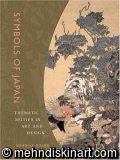
|
"Symbols of Japan," is a one-volume
encyclopedia and has between one and ten
paragraphs for each of the several
hundred subjects, making it easy to
maneuver. Each entry specifically
addresses how the topic is treated in
art, and also-and here is where this
book is so unique-first provides a
considerable amount of cultural
background in a truly interesting
manner. Some entries are predictable,
like dragons and cherry blossoms. But
others are off the beaten track or often
examined in a light I had not even
considered.
What kinds of subjects did I
personally like best? Such topics as how
the Japanese think of and depict
weather, the degree to which demons are
malicious and immoral, why ghosts of the
deceased are usually female, and the
role oxen play in fighting epidemics.
Also how the Japanese typically paint
tigers, why ropes and knots are so
important in everyday life and art, why
Japanese art shows clothing meant to
make Taoist wizards invisible, and what
it means if you see people in clothing
patterned with swastikas.
I do not think that "Symbols of
Japan" makes any pretensions that it is
a history of Japanese art, and it does
not examine any specific art media in
depth. Still, readers interested in
Japanese art (and others with
specialized interests such as samurai
history, tattoos, dolls, astronomy,
mythology, gardening, and the theater)
will surely want to make "Symbols of
Japan" a foundation of their libraries
and a first choice for learning more
about Japanese culture. Moreover, it is
truly beautiful to look at.
Read more
|
|
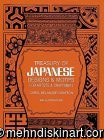
|
If quantity and quick reference for
tattooing is what you're looking for,
look no further. Be warned though the
illustrations are pretty weak in a lot
of areas, so be ready to redraw! But
there are tons of floral designs
(especially lotus) and simple designs
that are invaluable for a tattooer. So
as far as an excellent source on
traditional Japanese art it is not, but
it could be handy in the shop.
Read more
|
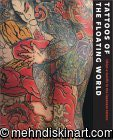
|
Most tattoo afficianados are aware that
Japanese tattoos are steeped in history
and culture. But Tattoos Of The Floating
World: Ukiy-o Motifs In The Japanese
tattoo explores this history and culture
in a way never done before. Takahiro
Kitamura's research and unique insight
combine to present the reader with not
only a history of the Japanese tattoo,
but also with an understanding of how it
came to be, how it continued to maintain
its traditions through centuries of
persecution and cultural metamorphosis,
and how it both influenced and was
influenced by the contemporary arts of
early Japan.
The first half of this excellent work
explores the early history of the
Floating World (as pleasure districts
were known as Japan's Edo period),
focusing on the "triumvirate of arts":
ukiyo-e (wood block prints), irezumi
(tattoos), and kabuki theatre. Ukiyo-e
and irezumi are so closely intertwined
that tattoos of the day were referred to
as horimono (carved object) in deference
to the process of carving a wood block
print. Kabuki was the theatre of the
people and expressed not only the
history and mythology of Japan, but the
people's innermost desires as well.
Kitamura's exploration of the ways in
which these three arts intertwined
demonstrates his love of the topic and
inspires a similar affection in the
reader.
The latter half of Tattoos Of The
Floating World details many of the
themes so strongly connected with
Japanese Tattoo today. Sections devoted
to such heroes as Fudo Myoo, Fujin and
Raijin, Kumonryu Shishin, and Tennin
give a basic understanding of their
characters themselves and their
endurance as tattoo motifs. Details are
also provided on such traditional images
as dragons, koi, shunga, falcons, the
Kurikaraken, tigers and the phoenix.
Illustrated throughout with ukiyo-e,
original sketches by Horiyoshi III, and
photographs by Jai Tanju, this work is
as beautiful as it is educational. The
pairing of sketches next to their
finished tattoos highlights the artistry
involved in Japanese tattoo while the
presentation of ukiyo-e prints alongside
tattoos of the same characters and
motifs demonstrates the cultural and
historic similarities.
As a special bonus, Don Ed Hardy
weighs in with an essay exploring his
own discovery of Japanese tattoo. Ed
Hardy is the foremost American authority
on Japanese tattoo and was one of the
first Westerners to write on the
subject. This essay follows his
discovery of Japanese tattoo and his
adventures in crossing the borders (both
physical and cultural) between Japanese
and Western tattooing.
Read more
|
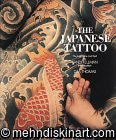
|
American photographer Sandi Fellman used
a rare large size Polaroid camera to
create these photos of Irezumi Japanese
men and women who wear elaborate
full-body tattoos. Fellman treats the
tattoos as artworks and their creators
as artists. Her text touches on the
tattooing process, common motifs, the
sociology of the tattoo, and
relationships between the tattoo masters
and their clients. Author D.M. Thomas
has contributed two pages of his
reactions to these unusual and even
disturbing images. The 46 color plates
in this volume, most of them whole body
nudes, should prove provocative,
fascinating, or repellant to a wide
variety of library patrons. Kathryn W.
Finkelstein, M.L.S., Cincinnati
Read more
|
|
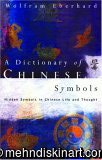
|
This unique and authoritative guide
describes more than 400 important
Chinese symbols,
explaining their
esoteric meanings and connections. Their
use and development in Chinese
literature
and in Chinese custom and
attitudes to life are traced lucidly and
precisely.
Read more
|
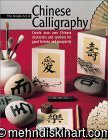
|
Practiced for over 5,000 years, Chinese
calligraphy is arguably the most revered
art form in the East. The Simple Art of
Chinese Calligraphy is the complete,
step-by-step beginner's guide to
creating the sacred characters of
Chinese script-the fragile motifs of
fruit and flowers that have deep meaning
in Eastern philosophy, and the symbols
of happiness and fulfillment. In this
unique guide, renowned calligraphy
artist Qui Lei Lei teaches the
philosophy of this ancient art and
demonstrates how to create the most
important symbols of Chinese
folklore-Luck, Love, Happiness, and Long
Life. Chinese calligraphy calls for a
meditative, relaxing focus on the task
of creating unique, time-honored
characters. As readers gather and
arrange their materials-the four
treasures-the author demonstrates how to
perform the truly ancient ritual of
preparing the mind and body for the
practice. When readers create these
unique symbols and signs, they will not
only create beauty and rhythm on the
page but also see how to connect with
the spirituality that lies beneath much
of the practice. Next, easy-to-follow
illustrations explain how to reproduce
such popular Chinese imagery as the
Three Friends of Winter, plum blossoms
for peace and love; bamboo shoots for
longevity, and the fronds of the pine
tree for vigor and new life. Finally,
readers can explore a series of
step-by-step calligraphy projects,
including greeting cards, place mats,
decorative books, and T-shirts.
Read more
|
|

|
I ran across this title in a small shop
in San Francisco's Chinatown. I was
running short on cash, and was kicking
myself within 24 hours for not
purchasing this book. Hawley provides
300 cut paper designs used in
traditional Chinese embroidery. Each
design is in white on a solid color
background (red, blue, black, brown, or
purple). The designs are clear and easy
to see and enjoy. A brief introduction
gives a little background (I would have
liked more) on this folk art, and an
index at the beginning allows users to
look up symbols of specific interest. Do
that, but browse the rest of the book as
well!
An eight-page supplement at the end
illustrates 160 symbols (including
ideograms, trigrams from the I Ching,
and pictorial symbols) used in
traditional decorative arts along with
their meanings. Fascinating!
For those interested in learning more
about Chinese art, or for those who just
enjoy beautiful designs, this is an
excellent choice.
Read more
|
|
 Art Distributor
Art Distributor![]()
 Art Distributor
Art Distributor![]()